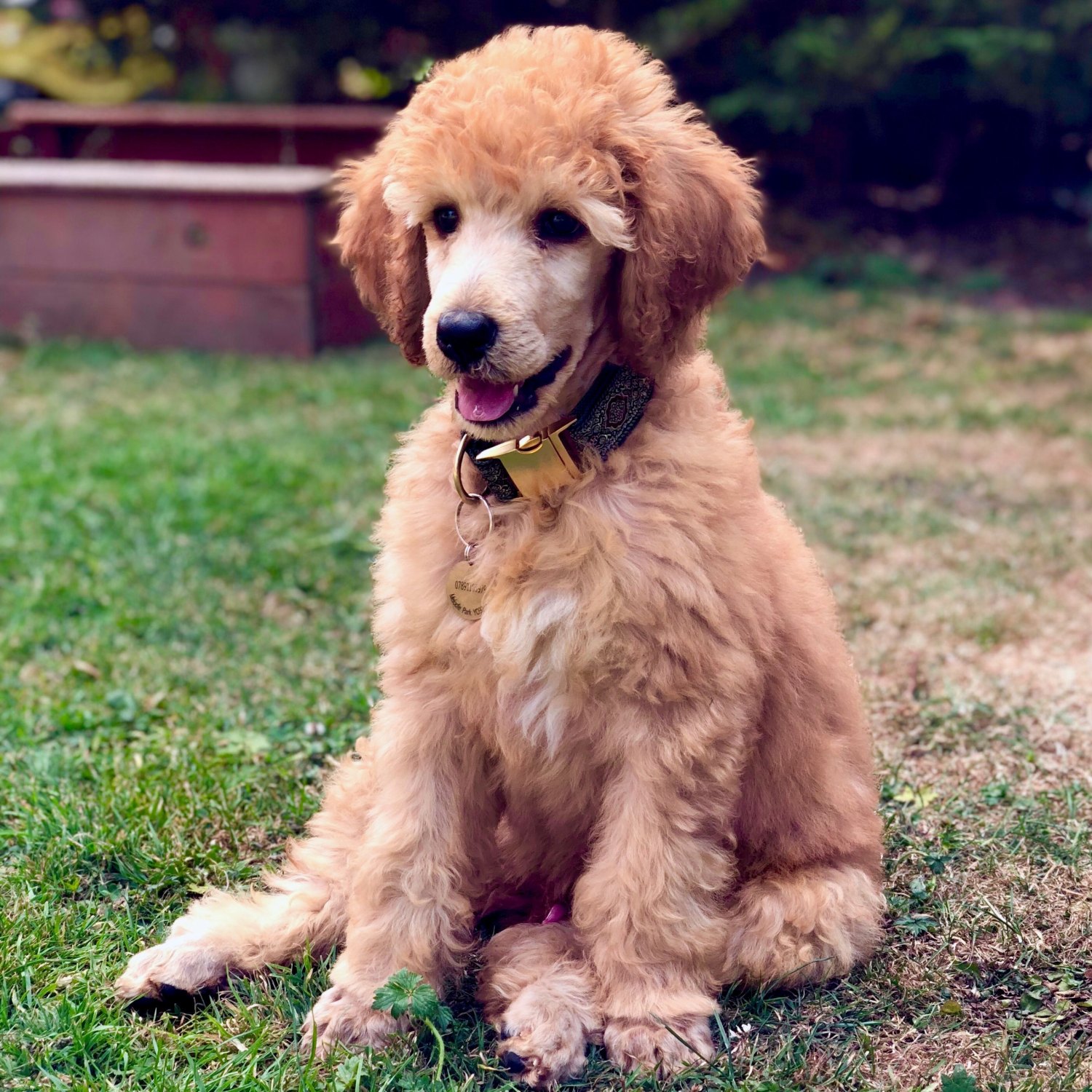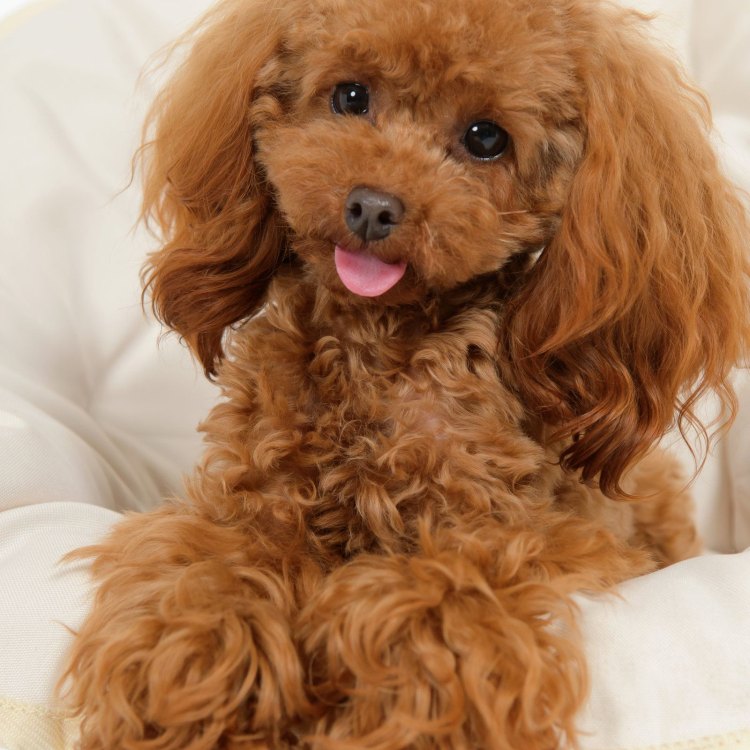
Poodle
Toy Poodle: 10 inches or less, Miniature Poodle: 10-15 inches, Standard Poodle: over 15 inches
Poodles are a popular breed of dog that come in three different sizes: toy, miniature, and standard. These intelligent and affectionate dogs are part of the Canidae family and can be found in various locations worldwide. Despite their small size, toy poodles have big personalities while the standard poodles make great working dogs. Whichever size you choose, poodles are sure to make a loving and loyal addition to any family.
Animal Details Summary:
Common Name: Poodle
Kingdom: Animalia
Habitat: Varied habitats including urban areas
The Poodle: A Beloved and Versatile Companion
When you hear the word "poodle," what's the first image that comes to mind? For many, it's a fancy, well-coiffed show dog strutting down a runway, adorned with bows and ribbons. While this may be the stereotypical image of a poodle, there is much more to these intelligent and lovable creatures.Poodles are a breed of dog that have captured the hearts of people all over the world. They are known for their distinctive curly coat, playful personality, and incredible intelligence Poodle. With a history dating back hundreds of years, poodles have become one of the most popular and well-loved breeds in the canine world. In this article, we will dive into the fascinating world of poodles, exploring their origin, characteristics, and why they make such wonderful companions.
A Brief History of the Poodle
The poodle's exact origin is still a bit of a mystery, but it is believed that they were originally bred in Germany as water retrievers for hunters. Their unique coat, with tight curls designed to insulate them from the cold water, was perfect for this purpose. In fact, the word "poodle" comes from the German word "pudel," which means "to splash."As poodles were bred and developed, they proved to be highly intelligent and trainable, making them popular performers in circuses and other entertainment shows. It wasn't until the 18th century that the poodle's popularity as a companion animal really took off, thanks to their affectionate and loyal nature.
The Science Behind the Poodle
Scientifically known as Canis lupus familiaris, the poodle falls under the animal kingdom, phylum Chordata, class Mammalia, and order Carnivora. They are categorized under the family Canidae, which includes wolves, foxes, and other domesticated dogs Palaeophis. While most breeds of dogs have a distinctive wild ancestor, the poodle is one of the few breeds that can trace its lineage back to ancient breeds such as the Barbet and Hungarian Water Dog.Poodles are known for their adaptability and their ability to thrive in various environments. They have been domesticated for hundreds of years and have been bred for different purposes, resulting in three different sizes – toy, miniature, and standard. Their size ranges from the tiny toy poodle, which can weigh between 4-6 pounds and stand at 10 inches or less, to the larger standard poodle, which can weigh between 45-70 pounds and stand at over 15 inches. The most common poodles, however, fall under the miniature category, weighing between 15-17 pounds and standing at 10-15 inches.
A True Omnivore
Poodles have a varied diet, with their feeding method being classified as omnivorous. While they predominantly thrive on a carnivorous diet, they can also process and digest plant-based foods. This makes them highly adaptable to different types of diets, making it easier for owners to cater to their individual needs.A high-quality dog food that is specially formulated for poodles is usually recommended, but adding in fresh fruits and vegetables can also be beneficial. As with any dog, it is important to monitor their food intake and make sure they maintain a healthy weight, as obesity can lead to joint problems and other health issues.
Fur Coloration and Body Shape
One of the most distinctive features of poodles is their curly coat. They can come in a variety of fur colors, including white, black, brown, apricot, and more. Their coats can also have different shades and patterns, making it almost impossible to find two poodles that look exactly alike.In addition to their fur, their body shape is also unique. With a slender, square appearance, poodles have a graceful and regal presence. Their muscles are well-defined, making them strong and athletic. This body structure is perfectly suited for their original purpose as water retrievers, as well as their agility and obedience training.
A Versatile Habitat
Poodles are known for being highly adaptable to different environments. While their ancestors were primarily bred for water retrieval, poodles have found success in various different roles, including as circus performers, guide dogs, and service animals. Their intelligence and trainability make them perfect for these roles, but they are also great as family pets.Many poodle owners live in urban areas, and these dogs thrive in that environment. They are not high-energy dogs, so they can comfortably live in apartments or small homes as long as they get enough exercise. However, they also do well in larger homes with backyards, making them a great choice for families of all sizes and lifestyles.
Poodles: More than Just a Pretty Face
One of the reasons poodles have become such a popular breed is their intelligence. In fact, they are considered one of the smartest dog breeds in the world. This makes them easy to train and eager to please their owners. They excel in obedience and agility training, and many are trained to assist people with disabilities.Poodles are also known for their friendly and social nature. They love being around people and make excellent companions for individuals or families. They are great with children and other pets, making them a versatile addition to any household.
Traveling the World
Thanks to their popularity, poodles can be found all over the world. While they have their roots in Germany, they have become a beloved breed in countries like the United States, France, and the United Kingdom. Poodles can also be found in countries like Japan, Australia, and many more.Their ability to adapt to different environments and their friendly nature makes them great travel companions. Many poodle owners take their furry friends on trips and vacations, enjoying the companionship and the attention their poodles receive from strangers.
Poodle Personalities
Every dog has a unique personality, and poodles are no exception. However, there are some general personality traits that are common among poodles. They are known for being lively and playful, making them great for families with children or active individuals. They are also highly affectionate and loyal, forming strong bonds with their owners.In addition, poodles are very sensitive and intuitive. They can sense their owner's emotions and will often try to comfort and cheer them up. This emotional intelligence is what makes them popular as emotional support animals. Poodles can sense when someone is feeling anxious or distressed and can provide a sense of calm and reassurance.
Taking Care of Your Poodle
As with any pet, poodles require proper care and attention to ensure their health and well-being. Regular grooming is essential to maintain their unique coat, which can become easily matted if left unattended. It is also important to exercise them regularly and provide them with a nutritious and balanced diet.Poodles are generally healthy dogs, but like all breeds, they are prone to some health issues. These can include hip dysplasia, eye problems, skin allergies, and ear infections. It is important to schedule regular vet check-ups to catch any potential health issues early on.
In Conclusion
Poodles may have a reputation as fancy show dogs, but they are much more than that. With a rich history and a fascinating lineage, these intelligent and affectionate dogs have captured the hearts of people all over the world. Their adaptability, loyalty, and friendly nature make them perfect companions for families, individuals, or anyone in need of a faithful friend.Whether you are looking for a playful and active companion, or a calm and attentive emotional support animal, a poodle may just be the perfect dog for you. So whether you are living in a bustling city or a peaceful countryside, there is a poodle out there waiting to become your devoted and beloved companion.

Poodle
Animal Details Poodle - Scientific Name: Canis lupus familiaris
- Category: Animals P
- Scientific Name: Canis lupus familiaris
- Common Name: Poodle
- Kingdom: Animalia
- Phylum: Chordata
- Class: Mammalia
- Order: Carnivora
- Family: Canidae
- Habitat: Varied habitats including urban areas
- Feeding Method: Omnivorous, primarily carnivorous
- Geographical Distribution: Worldwide
- Country of Origin: Germany
- Location: Various locations worldwide
- Animal Coloration: Varied, including white, black, brown, apricot, etc.
- Body Shape: Medium-sized with a square appearance
- Length: Toy Poodle: 10 inches or less, Miniature Poodle: 10-15 inches, Standard Poodle: over 15 inches

Poodle
- Adult Size: Toy Poodle: 4-6 pounds, Miniature Poodle: 10-15 pounds, Standard Poodle: 45-70 pounds
- Average Lifespan: 12-15 years
- Reproduction: Sexual
- Reproductive Behavior: Breeding occurs between male and female poodles
- Sound or Call: Varied vocalizations including barking, growling, and howling
- Migration Pattern: Non-migratory
- Social Groups: Can live in groups or as solitary individuals
- Behavior: Intelligent, active, and trainable
- Threats: No specific threats, although poodles can be susceptible to certain health issues
- Conservation Status: Not applicable
- Impact on Ecosystem: Poodles do not have a significant impact on ecosystems
- Human Use: Companion animals, show dogs, therapy dogs
- Distinctive Features: Curly or wavy coat, hypoallergenic, distinctive clip
- Interesting Facts: Poodles are highly intelligent and versatile dogs. They excel in various dog sports and are known for their unique grooming styles.
- Predator: Not applicable

Canis lupus familiaris
The Charm and Versatility of Poodles: A Guide to the Unique Features of this Beloved Dog Breed
If you’ve ever met a poodle, you know just how charming and unique they are. From their curly coats to their lively personalities, poodles are one of the most beloved dog breeds in the world. But what makes them stand out from other breeds? In this article, we will take a closer look at the distinctive features of poodles and explore why they are such a popular choice for pet owners all over the globe.From Toy Poodles to Standard Poodles: Understanding the Size and Lifespan of Poodles
One of the first things you may notice about poodles is their varying sizes PeaceOfAnimals.Com. They come in three sizes – Toy, Miniature, and Standard – with the standard poodle being the largest and the toy poodle being the smallest. On average, toy poodles weigh between 4-6 pounds, miniature poodles weigh 10-15 pounds, and standard poodles can weigh anywhere between 45-70 pounds. The size of a poodle is largely determined by its breeding and genetics.In terms of lifespan, poodles tend to have a longer life expectancy than many other dog breeds. On average, a poodle can live for 12-15 years, making them a great long-term companion for anyone looking to add a new furry friend to their family.
A Sexual Reproduction and Sociable Behavior: Understanding Poodles’ Reproduction and Social Groups
Like most mammals, poodles reproduce sexually. Breeding occurs between a male and female poodle, and a female poodle can give birth to a litter of 4-6 puppies on average. Poodles are known to be loving and sociable animals, and they can live in groups or as solitary individuals depending on their upbringing and training.While poodles are not considered to be pack animals like wolves, they do enjoy the company of other poodles and humans Panda Pied Ball Python. They are highly intelligent and crave companionship, making them ideal pets for individuals or families.
Barks, Growls, and Howls: The Vocalizations of Poodles
Poodles are known to be vocal dogs and can make a variety of sounds to communicate their needs or emotions. They can bark, growl, and even howl, depending on the situation. Poodles may bark to alert their owners of potential threats or to express excitement or happiness. However, with proper training, they can be taught to control their vocalizations and only bark when necessary.Non-Migratory Creatures: The Migration Pattern of Poodles
Unlike some animals that migrate during certain seasons or for breeding purposes, poodles are non-migratory creatures. They do not have a specific migration pattern and are content with living in one place for their entire lives. This makes them ideal pets for individuals who don’t want to constantly move their animals from one place to another.Intelligent, Active, and Trainable: Understanding the Behavior of Poodles
Poodles are highly intelligent and active dogs that require mental and physical stimulation. They are known to excel in various dog sports such as agility, obedience, and tracking. This is because they are agile, fast, and have a strong desire to please their owners. Poodles are also easy to train and are quick learners, making them a popular choice for therapy dogs and show dogs around the world.However, with their active nature comes a need for regular exercise and mental stimulation. Without proper outlets for their energy, poodles may become bored or destructive. It’s important for owners to provide them with activities and challenges to keep their minds engaged and their bodies healthy.
No Specific Threats, But Possible Health Issues: Understanding the Threats and Conservation Status of Poodles
Poodles are generally healthy dogs with no specific threats to their survival. However, like all breeds, they may be susceptible to certain health issues such as hip dysplasia, allergies, and eye problems. With proper care and regular check-ups with a veterinarian, these health issues can be managed and treated.In terms of their conservation status, poodles are not an endangered species and do not require any conservation efforts. They are a popular breed and are widely distributed all over the world as companion animals, show dogs, and therapy dogs.
From Companions to Show Dogs: Understanding the Human Use of Poodles
Poodles have been popular companion animals for centuries, and for good reason. They are loving, loyal, and make great family pets. They are also often chosen as show dogs for their intelligence, agility, and distinctive coat. In addition, their hypoallergenic coat makes them a popular choice for individuals with allergies. Poodles are also used as therapy dogs to provide comfort, companionship, and support to individuals who may need it, such as in hospitals or nursing homes.Curly Coats, Unique Styles, and Interesting Facts: Exploring the Distinctive Features of Poodles
One of the most iconic features of poodles is their curly or wavy coat. This distinctive coat is not just for show – it serves a practical purpose as well. The curly coat acts as insulation, protecting poodles from cold water when they were originally bred as water retrievers. In addition, poodles have a single layer coat rather than a double coat like most other breeds, making their coat hypoallergenic.Another unique feature of poodles is their grooming styles. They are often seen sporting the “poodle clip”, a distinctive haircut that comes in various styles such as the puppy clip, the lamb clip, and the continental clip. These grooming styles not only make poodles stand out in a crowd, but they also serve practical purposes such as keeping the hair out of their eyes and reducing matting.
Interesting facts about poodles are plenty – they were once used as circus performers, they are the national dog of France, and they are considered the second most intelligent dog breed in the world after the Border Collie. With their versatility and intelligence, poodles are also used as guide dogs, search and rescue dogs, and even in military and police work.
Predators and Ecosystems: Understanding Poodles’ Impact on the Environment
Unlike other animals that may have an impact on their ecosystems, poodles do not have any significant impact on the environment. They are not predators and do not hunt other animals, nor do they have physical features that may alter their natural surroundings. They coexist peacefully with other animals and play a small role in maintaining the balance of their ecosystems.In Conclusion
Poodles are more than just fluffy and cute dogs – they are highly intelligent, versatile, and sociable animals with distinctive features that make them stand out from other breeds. From their unique grooming styles to their highly trainable nature, it’s no wonder that poodles have been a popular choice for pet owners for centuries. Whether you want a loving companion, a show dog, or a therapy dog, poodles are the perfect fit for a variety of lifestyles and needs.

The Poodle: A Beloved and Versatile Companion
Disclaimer: The content provided is for informational purposes only. We cannot guarantee the accuracy of the information on this page 100%. All information provided here may change without prior notice.












